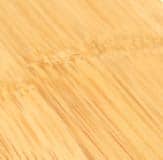Design
How to choose the right floor material

How to choose the right floor material
Design
How to choose the right floor material

VINYL
Characteristics
- Huge selection of styles and colours. Available in tiles or sheets.
Pros
- Low price, low maintenance.
- Double-thick vinyl is ideal for damp areas like bathrooms. Tiles are easy to DIY if the subfloor is level.
Cons
- Vulnerable to scratches, tears, stains and wear.
Cost
- $2-$10 per square foot

CERAMIC TILE
Characteristics
- Huge selection of colours, styles and sizes.
Pros
- Can easily be coordinated to tile backsplash.
Cons
- Can cause discomfort to legs and back after prolonged standing. Not all tiles are equally wear-resistant; high-traffic areas like kitchens call for stronger ceramic.
- Can crack or chip.
- Needs a level subfloor.
Cost
- $7-$25 per square foot

LINOLEUM
Characteristics
- Huge selection of styles and colours. Available in tiles or sheets.
Pros
- Natural, biodegradable and hypoallergenic, composed of flax and natural resin. Does not trap dust or bacteria, which helps air quality. Low maintenance, durable and mildew-resistant.
Cons
- Does not suit all decors.
Cost
- $7-$13 per square foot.

PORCELAIN TILE
Characteristics
The look of stone, for less! Huge selection of colours and designs.
Pros
Stronger than ceramic; durable and low maintenance.
Cons
Can cause discomfort to legs and back after prolonged standing.
Cost
$8-$28 per square foot

LAMINATE
Characteristics
Great selection of styles and colours. Looks like wood, stone, ceramic.
Pros
Resists stains, scratches, dents, even cigarette burns. Relatively easy to DIY, often directly on top of existing floor. Click-into-place styles can simply be dismantled and taken with you when you move. Good-quality laminate can last up to 25 years.
Cons
Not recommended for bathrooms or other damp areas. Must be replaced when worn.
Cost
$3-$11 per square foot

BAMBOO
Characteristics
Gives decor an exotic accent. Beautiful blond tone with natural striations. Carbonization process deepens grain and colour. Some natural shades available.
Pros
Environmentally friendly: Bamboo is a renewable, rapid-growth plant.
Harder and more resistant to dampness than wood, making it particularly suitable for the kitchen and basement.
Cons
Relatively limited selection of shades.
Cost
$7-$10 per square foot

ENGINEERED WOOD
Characteristics
An alternative to hardwood and laminate, this is the most versatile option in this category.
Pros
Produced by adhering sheets of real wood to a composite surface. Does not expand or contract with temperature changes. Sold prefinished. Can be glued or clicked into place directly over concrete or an acoustic nderlayment.
Cons
Less durable than hardwood. Cannot be sanded more than twice.
Cost
$12-$20 per square foot

CONCRETE
Characteristics
Provides the industrial look that’s increasingly popular.
Pros
Perfect for lofts. Good selection of colours and finishes.
Cons
Can cause leg and back discomfort after prolonged standing. Surface receiving the concrete must be properly prepared. Needs yearly resealing.
Cost
About $13 per square foot

CORK
Characteristics
Available in tiles or interlocking planks to make a floating floor. Good selection of colours and styles, allowing you to create a one-of-a-kind design.
Pros
Warm and cushiony on bare feet. Hypoallergenic and mildew- and dent-resistant, making it suitable even for bathrooms. As durable as wood, but an extra application of sealer is recommended in damp rooms.
Cons
Does not go well with all decors. Less popular than wood.
Cost
$6-$16 per square foot

HARDWOOD
Characteristics
Oak and maple are the most popular. New: pre-oiled exotic woods, now available with semi-gloss and gloss finishes.
Pros
Forms a warm, natural atmosphere. Never goes out of fashion. More comfortable for legs and back than harder surfaces. Durable if properly sealed. With oiled floors, a sanding and a coat of mineral oil will hide scratches. Look for longer boards to avoid a patchwork effect.
Cons
Requires resealing every few years, but floorboards with a factory-sealed finish can be extremely resistant if they’re good quality. Dirt can accumulate in too-wide joints between boards.
Cost
$7-$22 per square foot

NATURAL STONE
Characteristics
Slate, marble, limestone and sandstone are popular choices.
Pros
Slab marble and limestone are not especially hard-wearing, but tumbled (travertine) marble is highly durable.
Cons
Can cause leg and back discomfort after prolonged standing. Because it is a natural material, stone can contain imperfections (texture, colour, veining). Needs regular sealing.
Cost
$8-$50 per square foot
Does your guarantee cover defects related to the manufacturing, finish and installation of flooring? See to it that it does. Note that many manufacturers and retailers offer coverage valid for as long as the purchaser owns the premises. Check to see that you have that kind of guarantee. As well, carefully read the exclusion clauses in the contract: Damages attributable to inadequately maintained or protected products are usually not covered.
INSTALLATION
Poor installation may shorten the lifespan of flooring by several years. If you have a fairly good idea of the work involved and a measure of know-how, you’ll likely be able to install ceramic or stone tiles yourself. By taking the measurements of the surface area covered (once you’ve drawn up a rough plan of your kitchen) and consulting a professional on the steps to follow, you’ll no doubt achieve good results. However, if you opt for vinyl or linoleum, hiring a professional is highly recommended. This kind of work requires levelling the surface area perfectly (especially when you’re working with cement); the slightest imperfection is liable to limit the durability of the flooring, due, for example, to warping.














Comments